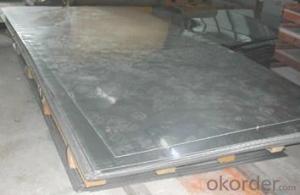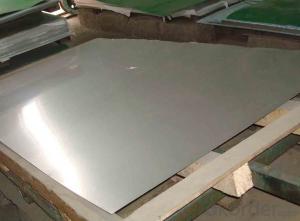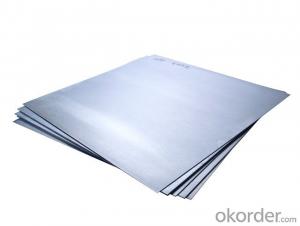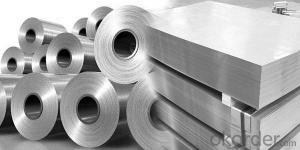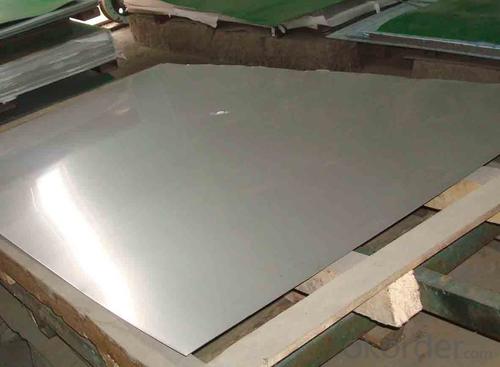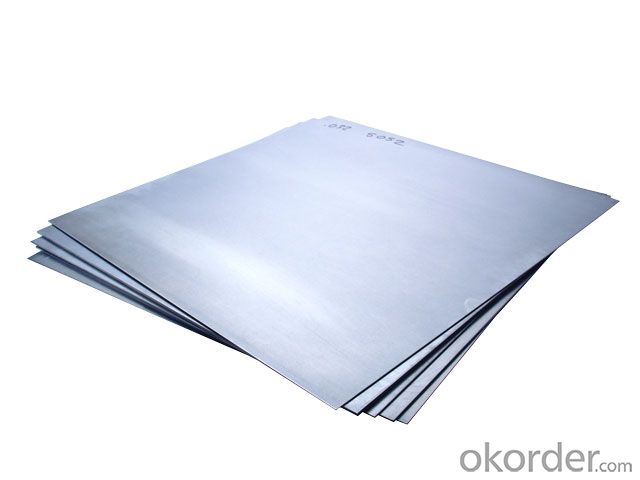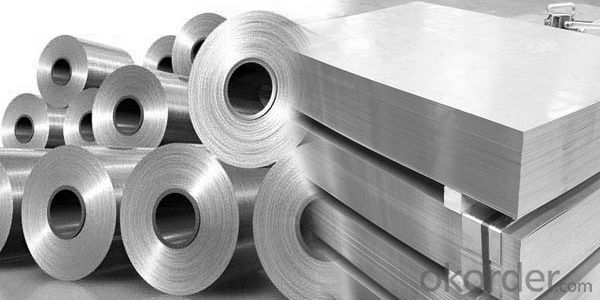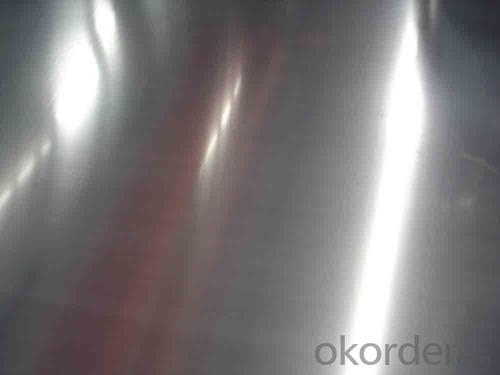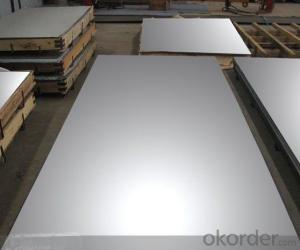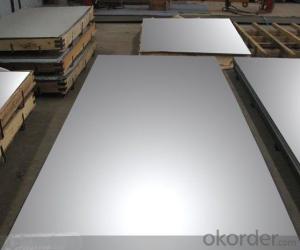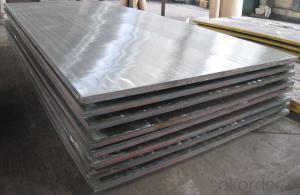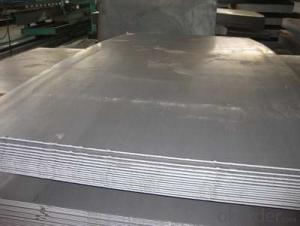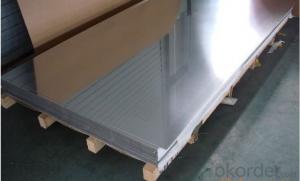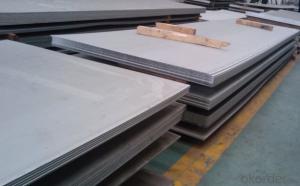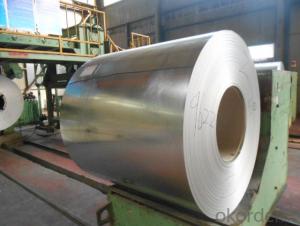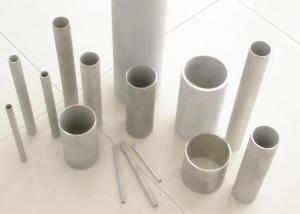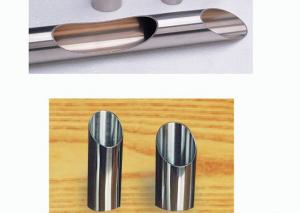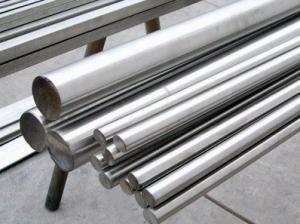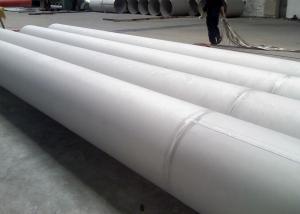Stainless Steel sheet 321 with No.4 Surface Treatment
- Loading Port:
- Shanghai
- Payment Terms:
- TT OR LC
- Min Order Qty:
- 500 m.t.
- Supply Capability:
- 5000000 m.t./month
OKorder Service Pledge
OKorder Financial Service
You Might Also Like
Hot sale stainless steel sheet 201/202/304/304l/310S/309S/316L/316Ti/316/316l/321,410/420/430/444/443/409L, and 904L.
Description of Stainless Steel Sheet:
Description | steel sheet,hot rolled steel sheet,cold rolled steel sheet, steel sheet,sheet,steel plate |
Standard | ASME, ASTM, EN ,BS,GB,DIN, JIS etc |
Application | Steel sheet applies to construction field, ships building industry, petroleum & chemical industries, war and electricity industries, food processing and medical industry, boiler heat exchanger, machinery and hardware fields. |
Packaging | Standard export sea-worthy packing |
Delivery time | 10-30 days |
Quality | No.1 |
Productivity | 500 tons/Day |
Note | Our company has cooperative relation between the domestic agents. Stainless steel sheet can be made accordingto the customers requirements. Fasten delivery. Quality assured. |
Contacts | If you have any question,please feel free contact me. |
Stainless steel sheet surface finish characteristics
Surface finish | Characteristics and application |
2B | The surface brightness and flatness of no2B is better than no2D. then through a special surface treatment to improve its mechanical properties,No2B could nearly satisfy comprehensive uses. |
No.1 | Polished with abrasive belt of grit#100-#200, have better brightness with discontinuous coarse stria, used as inner and external ornaments for building, electrical appliances and kitchen utensils etc. |
No.4 | Polished with abrasive belt of grit #150-#180,have better brightness with discontinuous coarse stria, but thinner than No3, are used as bathtub buildings inner and external ornaments electrical appliances kitchen utensils and food processing equipment etc. |
HL | Polished with abrasive belt of grit #150-#320 on the NO.4 finish and has continuous streaks, mainly used as buildings ornaments elevators, door of building, frontal plate etc. |
BA | Cold rolled, bright annealed and skin-passed, the product have excellent brightness and good reflexivity like mirror, kitchen apparatus, ornament etc. |
8K | The product have excellent brightness and prefer reflexivity can to be the mirror. |
Main Features of stainless steel sheet :
•Escalator, Elevator, Doors
•Furniture
•Production tools, Kitchen appliances, freezers, cold rooms
•Auto Parts
•Machinery and Packaging
•Equipment and Medical devices
•Transport system
Product Details:
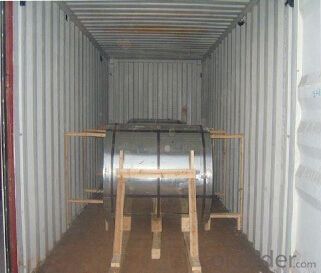
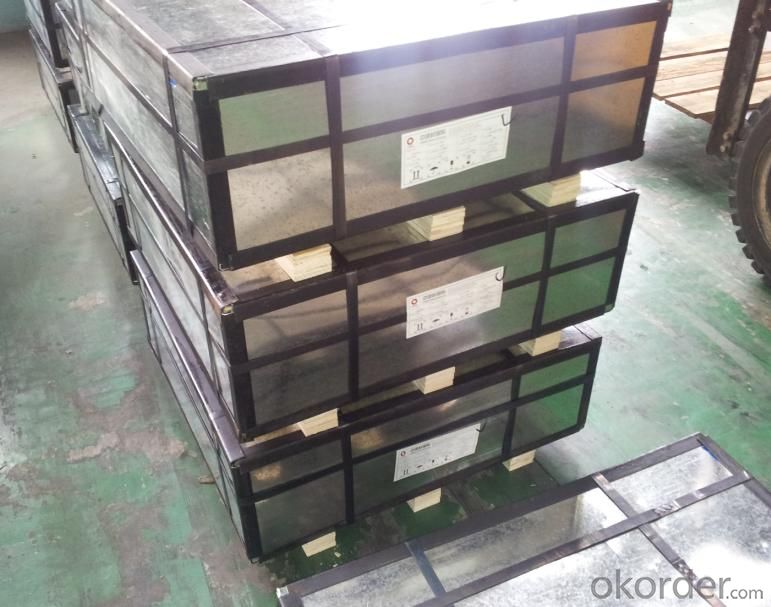
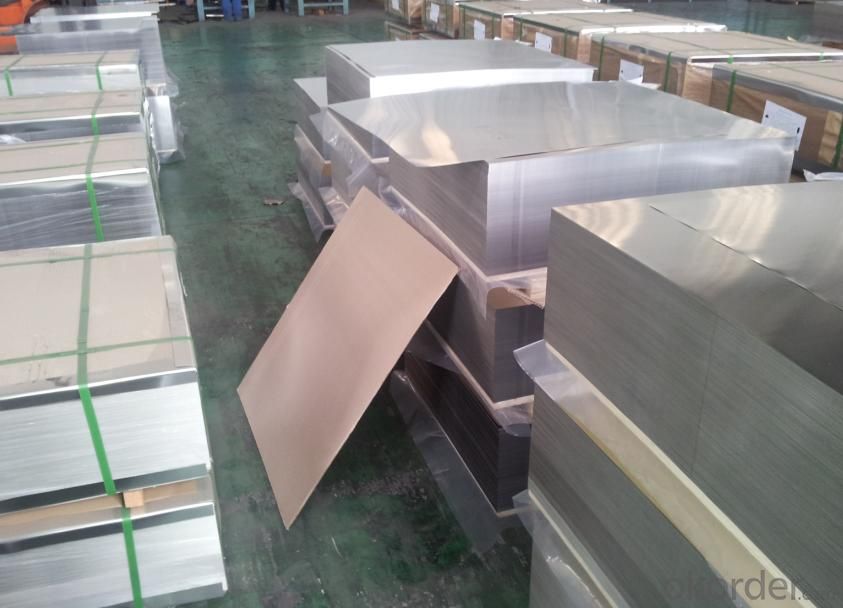
Sandard Seaworth Packing(wooden packing with water proof paper)
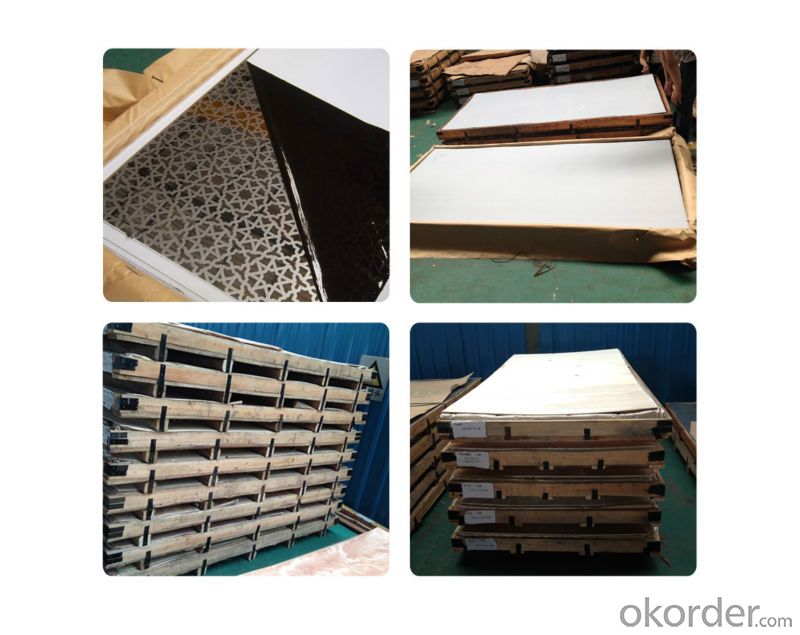
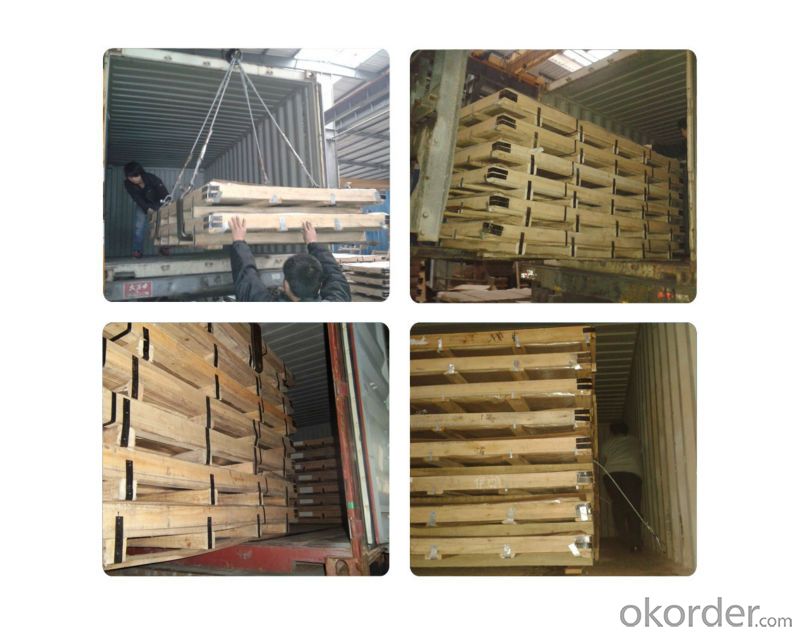
FAQ:
1. What's the quality?
very fine
2. How long get reply?
within 24 hours
If you have any question about stainless steel sheets,donot forget to sending the email to Us! You will get the competitive Price and have a very good experience about the Buying Process! CNBM International Corporation is always your trustful friend!
- Q: 1cm thick 201 stainless steel plate how much money party
- Water or other weak corrosive medium or stainless steel is called stainless steel; and chemical resistance medium (acid, alkali, salt and other chemical etching) corrosion of steel is called acid resistant steel. Because of the difference in the chemical composition of the two, and make their corrosion resistance is different, ordinary stainless steel is generally not resistant to chemical medium corrosion, and acid resistant steel are generally stainless steel.
- Q: Do stainless steel sheets have a specific weight?
- Indeed, stainless steel sheets possess a distinct weight. The weight of a stainless steel sheet is contingent upon its dimensions, thickness, and density of the stainless steel substance. In comparison to other metals, stainless steel generally exhibits greater density, resulting in a higher weight for an equivalent volume. To compute the weight of a stainless steel sheet, one can multiply its volume by its density. Typically, the specific weight of stainless steel is denoted in pounds per square foot or kilograms per square meter.
- Q: Are stainless steel sheets suitable for elevator control panels?
- Yes, stainless steel sheets are suitable for elevator control panels. Stainless steel is known for its durability, resistance to corrosion, and ease of maintenance, making it a popular choice for various applications including elevator control panels. It provides a sleek and modern appearance, can withstand constant use and touch, and is easy to clean and disinfect, making it an ideal material for elevator control panels.
- Q: Are stainless steel sheets resistant to pitting corrosion?
- Stainless steel sheets possess resistance against pitting corrosion. Pitting corrosion is a localized type of corrosion that occurs in specific regions, causing small pits or holes to form on the surface of the metal. Stainless steel sheets are manufactured with a significant amount of chromium, which generates a passive oxide layer on the surface, thus providing exceptional corrosion resistance. This oxide layer functions as a protective barrier, safeguarding the metal against pitting corrosion. Moreover, stainless steel comprises additional alloying elements like nickel and molybdenum, which further augment its resistance to pitting corrosion. Consequently, stainless steel sheets exhibit a high level of resistance to pitting corrosion and are extensively used in industries where corrosion resistance is of utmost importance, such as construction, automotive, and food processing.
- Q: Are stainless steel sheets suitable for chemical processing plants?
- Chemical processing plants find stainless steel sheets highly suitable. The reason lies in the excellent corrosion resistance that stainless steel offers, making it the ideal choice for environments with chemicals. It can resist a wide range of chemicals, including acids, alkalis, and solvents, which are commonly present in chemical processing plants. Moreover, stainless steel sheets provide high strength and durability, enabling them to endure harsh operating conditions and maintain their structural integrity over time. They are also easy to clean and maintain, ensuring a hygienic environment in chemical processing plants. Furthermore, stainless steel sheets possess favorable thermal properties, making them appropriate for applications involving extreme temperatures. Additionally, they have low magnetic permeability, which proves advantageous in certain chemical processing operations. All in all, stainless steel sheets are a favored option in chemical processing plants due to their corrosion resistance, strength, durability, and ease of maintenance.
- Q: Can stainless steel sheets be used for solar panel frames?
- Yes, stainless steel sheets can be used for solar panel frames. Stainless steel is a popular choice for solar panel frames due to its high strength, durability, and corrosion resistance properties. It can withstand various weather conditions, including extreme heat, humidity, and exposure to sunlight. Additionally, stainless steel is non-magnetic and non-combustible, making it a safe choice for solar panel installations. Its high strength-to-weight ratio also allows for lighter frame designs, reducing the overall weight of the solar panels and making them easier to install. Overall, stainless steel sheets are a reliable and long-lasting option for constructing solar panel frames.
- Q: What are the different types of etched patterns available for stainless steel sheets?
- Stainless steel sheets come in a range of etched patterns, each with its own distinctive and visually appealing design. Some popular options include: 1. The Diamond Pattern: This classic and elegant design features small diamond-shaped indentations etched onto the stainless steel surface. It is commonly used in architectural applications. 2. The Checkerboard Pattern: Resembling a checkered board, this pattern adds a modern and geometric touch to stainless steel sheets. It is often utilized in interior design and decorative settings. 3. The Floral Pattern: Incorporating floral designs etched onto the stainless steel sheet, this pattern brings an element of elegance and sophistication. It is commonly seen in luxury home decor and jewelry. 4. The Geometric Pattern: Offering a contemporary and artistic look, this pattern includes various geometric shapes etched onto the stainless steel sheet. It is suitable for both modern and traditional settings. 5. The Wave Pattern: By etching wavy lines onto the stainless steel sheet, this pattern creates a sense of movement and fluidity. It is frequently employed in architectural projects for a dynamic and visually interesting effect. 6. The Textured Pattern: With various textures like brushed, hammered, or linen finishes etched onto the stainless steel sheet, this pattern adds depth and dimension to the metal. It is ideal for interior design and decorative purposes. 7. Custom Patterns: In addition to the standard options, it is also possible to create custom patterns based on specific designs or logos. This allows for personalized and unique stainless steel sheets, often used in branding or specialty projects. Overall, the wide range of etched patterns available for stainless steel sheets provides endless possibilities for design and application. Whether for architectural, decorative, or industrial purposes, there is a pattern to suit every need and aesthetic preference.
- Q: What are the different types of brushed finishes available for stainless steel sheets?
- There are several types of brushed finishes available for stainless steel sheets, including satin, mirror, hairline, and bead blasted finishes.
- Q: Are stainless steel sheets suitable for pharmaceutical equipment?
- Indeed, stainless steel sheets prove to be appropriate for pharmaceutical equipment. The pharmaceutical industry extensively utilizes stainless steel owing to its exceptional resistance to corrosion, remarkable strength, and hygienic attributes. Its ease of cleaning and sterilization renders it perfect for applications that demand utmost cleanliness and product purity. Moreover, stainless steel displays resistance to chemicals and can endure extreme temperatures, thereby making it suitable for a multitude of pharmaceutical procedures. Furthermore, stainless steel sheets can be tailored in terms of thickness, size, and finish to fulfill precise equipment specifications. On the whole, stainless steel sheets deliver longevity, dependability, and the indispensable sanitary properties indispensable for pharmaceutical equipment.
- Q: What are the common grades of stainless steel sheets used in construction?
- The common grades of stainless steel sheets used in construction are typically classified as austenitic, ferritic, or duplex stainless steels. Austenitic stainless steels, such as 304 and 316, are the most widely used grades due to their excellent corrosion resistance and high strength. These grades are commonly used in architectural applications, roofing, cladding, and structural components. Ferritic stainless steels, like 430, are known for their good corrosion resistance and high toughness, making them suitable for applications where strength and durability are important. They are often used in decorative applications, interior design elements, and automotive trim. Duplex stainless steels, such as 2205, offer a combination of excellent corrosion resistance and high strength, making them ideal for heavy-duty applications in construction. These grades are commonly used in bridges, offshore structures, and industrial plants where superior strength and resistance to chloride-induced stress corrosion cracking are required. It's important to note that the selection of the grade of stainless steel sheet depends on the specific requirements of the construction project, such as the environment, load-bearing capacity, and aesthetic considerations. Consulting with a materials engineer or a stainless steel supplier can help determine the most suitable grade for a particular construction application.
Send your message to us
Stainless Steel sheet 321 with No.4 Surface Treatment
- Loading Port:
- Shanghai
- Payment Terms:
- TT OR LC
- Min Order Qty:
- 500 m.t.
- Supply Capability:
- 5000000 m.t./month
OKorder Service Pledge
OKorder Financial Service
Similar products
Hot products
Hot Searches
Related keywords
